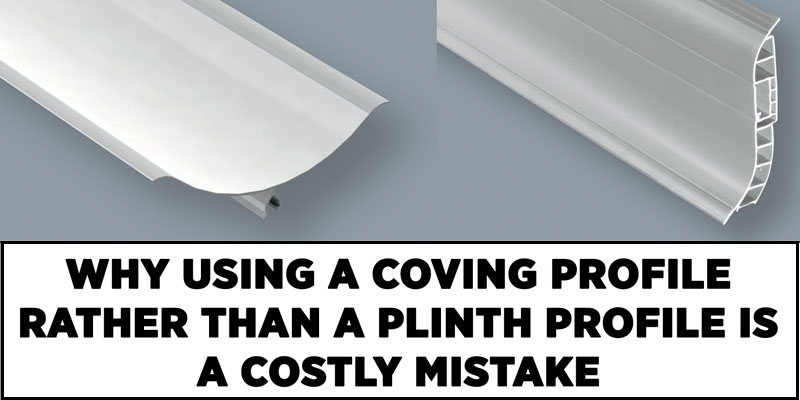WHEN TO USE THE PLINTH AND THE COVING PROFILES IN THE COLD ROOM?
Today we explain why using the coving profile instead of the plinth is an expensive mistake that you can avoid when building a cold – room. We have recently noted that our customers tend to use the coving profiles on the floor of a cold-room instead of the plinth profiles. In this blog post, we are going to shed light and give a complete guide on the coving profile usage.
WHAT IS THE COVING PROFILE?
Let’s clarify that the coving profiles have a semi-round structure that makes them perfect to close squared angles: they are not suitable to fit wider angles (although they can stretch a little). Coving profiles are ideal to fit in the wall-to-wall or wall-to-ceiling connection in a cold – room, where they can fill the space of the square angle, as the hygienic norm requires.
However, how many cold-room floors offer a square angle with the wall? Indeed, not many. So, if you use a coving profile on a wide-angle, you immediately lose the benefit of the easiness of installation.
You have to add rivets and sealant to fill the gaps; you also may lose the hygienic certificate, as the sealant will turn black very quickly with the regular use of the cold – room.
ADVANTAGES OF THE PLINTH PROFILE
When you use the correct profile for floor-to-wall connection, the plinth profile, you avoid that. Second, plinth profiles are slim, so they stay close to the wall and take only 10mm of floor space while coving profiles take 50mm. Is that 40 mm so life-changing for you? Well, they might be.
Have you ever noted that forklifts and pallet-truck tend to move around about that 40mm from the wall? It means that they are very likely to step on the coving profile and break it over and over again.
SAVE UP BY INSTALLING THE PLINTH PROFILE
So let’s run numbers and see how much you can save if you install plinth profiles instead of coving profiles on the floor-to-wall connection. Plinth profiles usually are 30% more expensive than coving profiles. Still, when you compare it with the cost of replacing a broken coving profile, you will see how much you can save by installing the plinth profile from the very beginning!
CONTACT US TODAY
Please contact us if you have any questions about coving profile usage and plinth profiles, and we will gladly respond. You can contact us by phone at +44 7887 884768 or by completing the form below. You can also email us at sales@globepanels.com. When you contact us, we will be able to provide you with an estimate as well as a more detailed explanation of our products and services.

 WhatsApp Us
WhatsApp Us
0 Comments Leave a comment